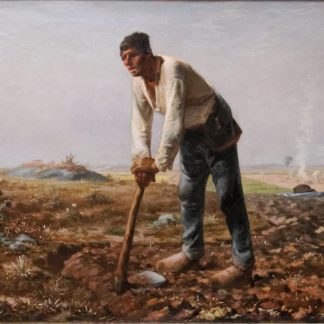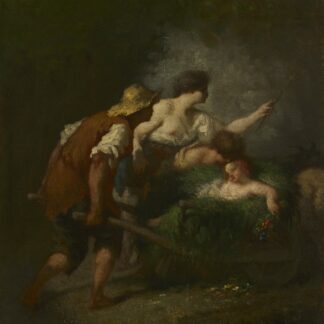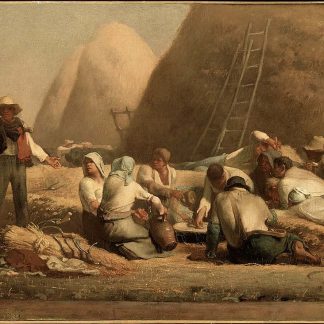Jean-François Millet (1814-1875) was a French painter who is best known for his depictions of rural life, particularly the lives of peasants and farmers. Millet’s work is characterized by its realistic and sympathetic portrayals of working-class people, and its emphasis on the dignity and humanity of rural life. His paintings often depict people engaged in agricultural work, such as harvesting crops, tending to animals, or plowing fields.
Millet’s approach to painting was influenced by the Barbizon School, a group of French painters who were interested in the realistic portrayal of nature and rural life. His work was also influenced by his own experiences growing up in a rural area and working as a farmer before he became an artist. His paintings often convey a sense of hard work and struggle, but they also convey a deep appreciation for the natural world and the cycles of life and death.
Millet’s legacy as an artist has been significant, and his influence can be seen in the work of many later artists, particularly those interested in the social and political dimensions of art. His emphasis on the lives of working-class people helped to broaden the subject matter of art and to challenge traditional ideas about what was considered “worthy” of artistic representation. Today, his paintings continue to be celebrated for their humanity, realism, and appreciation of the natural world.
Showing all 4 results
-

The Man With The Hoe
Millet, Jean-Francois From $28.69 Select options This product has multiple variants. The options may be chosen on the product page -

The Angelus
Millet, Jean-Francois From $28.69 Select options This product has multiple variants. The options may be chosen on the product page -

Return From The Fields C 1846–47
Millet, Jean-FrancoisUncategorized, Best Sellers, Giclee Prints
From $28.69 Select options This product has multiple variants. The options may be chosen on the product page -

Harvesters Resting
Millet, Jean-Francois From $34.44 Select options This product has multiple variants. The options may be chosen on the product page
Showing all 4 results




